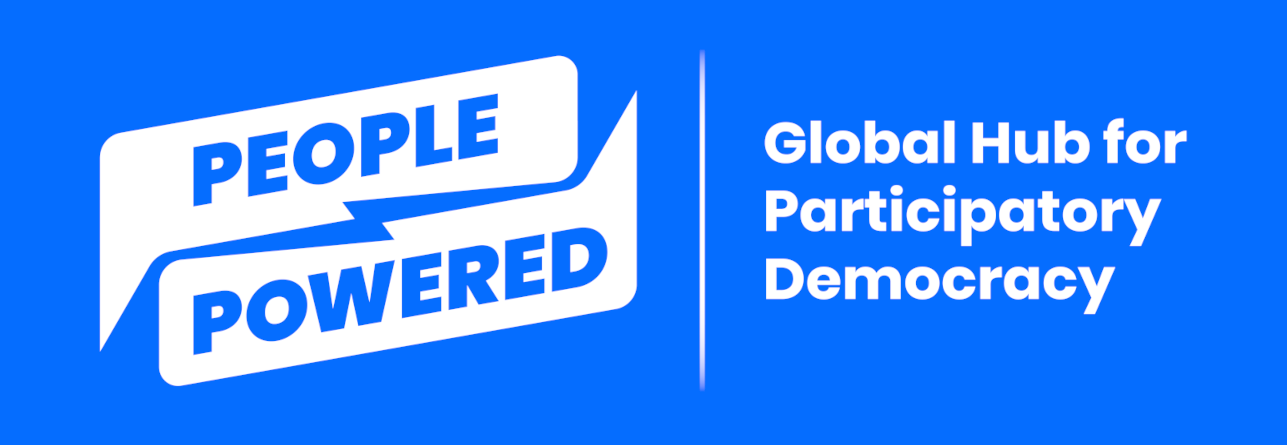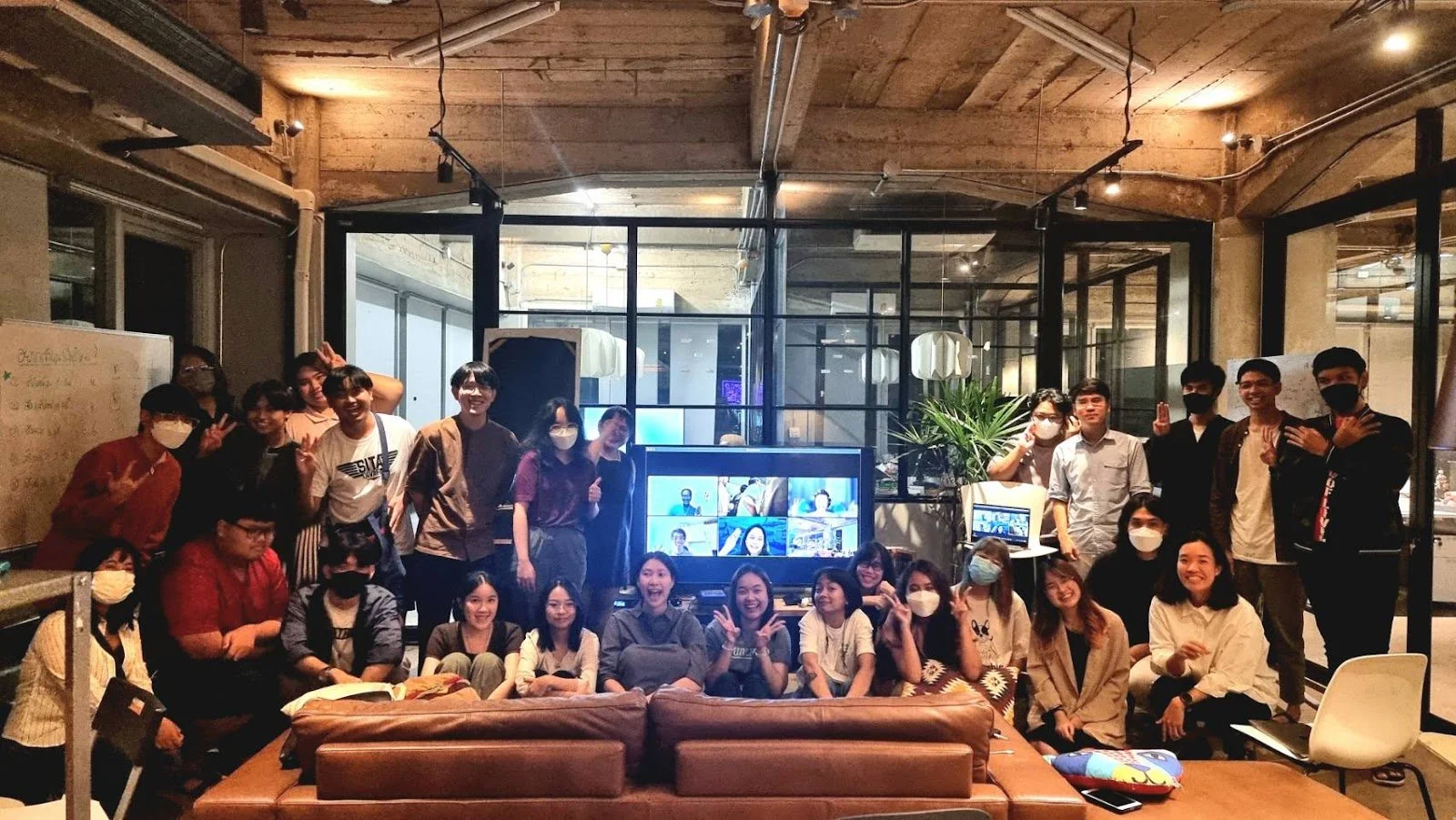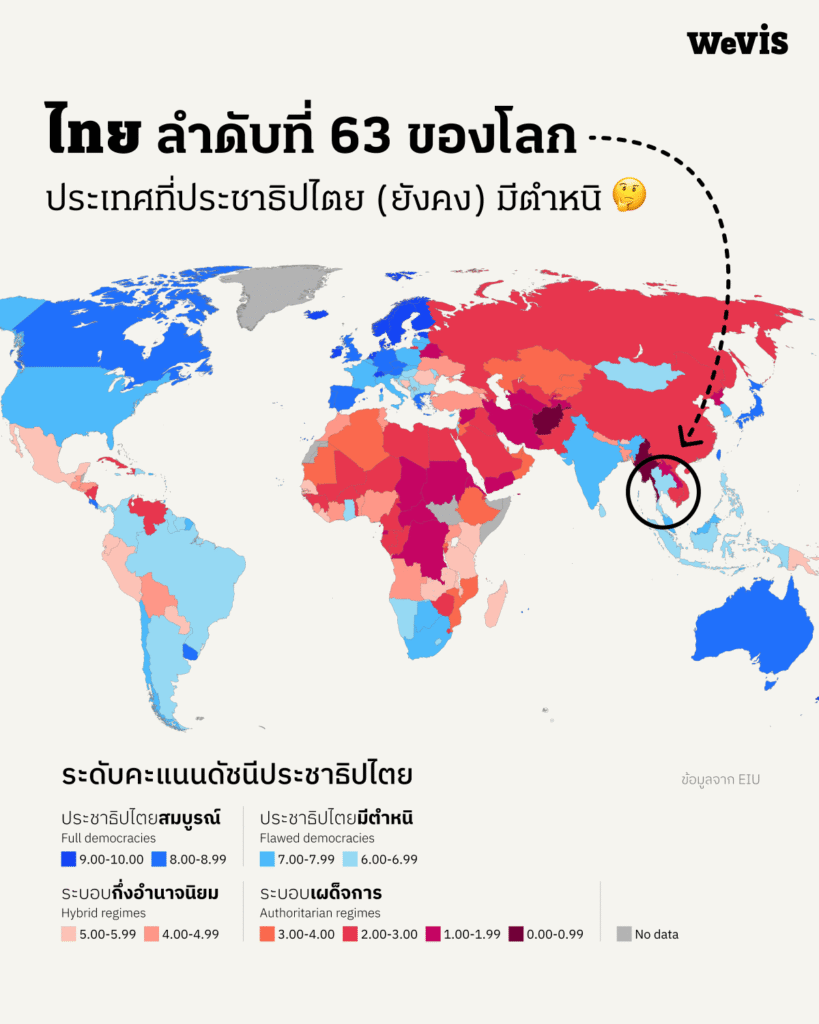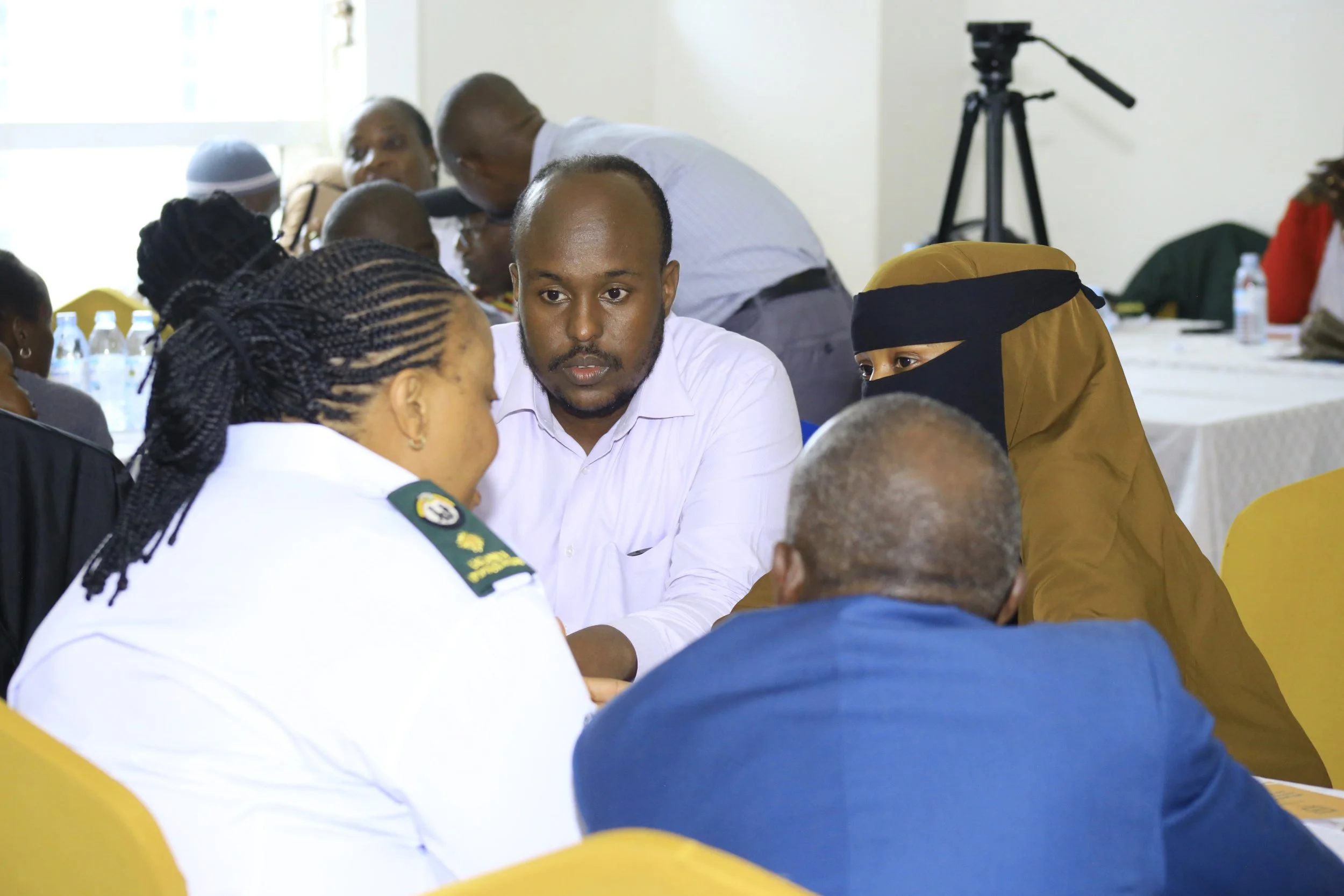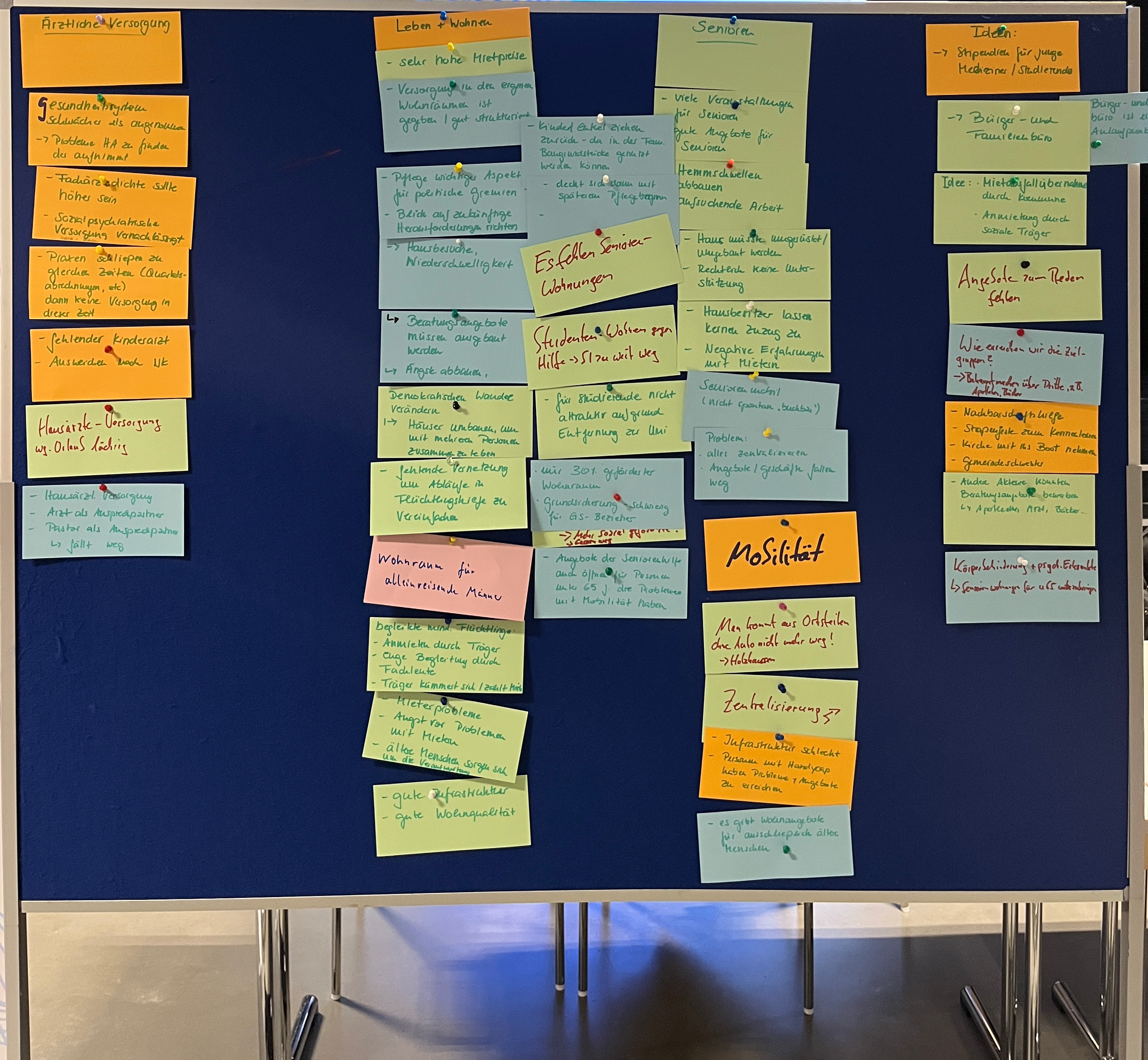WeVis: Supporting participatory democracy in Thailand through locally developed digital tools
/Source WeVis
This is part of a series of stories on digital participation platforms produced with support from the Friedrich Naumann Foundation’s Global Innovation Hub, Taipei. To read others in the series, see these case studies from Germany and Colombia.
Thailand is a country with a long history of political instability. In the 90 years, there have been 13 coups and 20 versions of the constitution. Each time a coup occurs, a new election follows, and the power holders revise the constitution to consolidate their authority. Due to this background, Thailand’s current constitution, written under military rule in 2017, still contains many undemocratic elements that continue to impact the country’s democracy. Since the last election in 2019, many politicians, NGOs, and citizens have called for constitutional reform. However, there are major challenges - ongoing political instability and the lack of a clear roadmap for how reform or a full constitutional rewrite should take place.
For more than six years, many active citizens have tried to keep the conversation about constitutional reform alive by joining focus groups and sessions. But these discussions often get stuck in a loop, where the same points are raised repeatedly without a system to gather insights and move the debate forward. WeVis, a civic technology initiative, noticed a gap and decided to dedicate itself to empowering citizens through open data and digital participatory tools. While WeVis does not directly arrange the campaigns or focus groups, it collaborates closely with facilitators and organizations that host these discussions. Many of these groups lack tools to systematically gather, structure, and build on what people have already discussed.
That is where WeVis and its platforms come in. Since its inception in 2020, WeVis has been supporting participatory democracy in Thailand through various projects, including Bangkok Budgeting, DreamCon, Let’s Get Together, They Work for Us, Promise Tracker, and more. WeVis provides tools to collect and organize insights from these public discussions, helping people see what has already been said and how each topic connects to the wider conversation. This keeps the debate moving forward and prevents it from circling back to the same points.
Bangkok Budgeting: Bringing citizen participation and transparency to city spending
One of WeVis’ main projects is the Bangkok Budgeting project which began as an independent civic initiative to promote transparency and accountability. Through this project the WeVis team collected and mapped the city’s budget data to help citizens understand “how they use the money and why they use the money, explained WeVis’ CEO and co-founder, Thanisara GG Ruangdej.
During the early stages, there was no collaboration with officials. However, when Bangkok’s mayor launched the Open Bangkok campaign to increase transparency, his team noticed the project and reached out to WeVis. This led to formal collaboration with the Bangkok Metropolitan Administration (BMA). Together, they aligned the project with the city’s budget cycle and introduced a new regulation allowing an annual community budget, enabling local residents to submit their own proposals: “People in each community in Bangkok can propose their own project to use this allocated budget. “But the project gained popularity because Thailand lacked ways for citizens to propose new programs or influence budget spending. Now, people in each community in Bangkok can propose their own project to use this allocated budget,” Thanisara GG Ruangdej.
Speaking to the early efforts of the project, GG said, “We first tried with the national budget, but we failed, we tried for five years after the election, after the coup. Working with the national budget is difficult because it’s a bigger amount and affects a lot of people.” However, they found more success at the city level thanks to the current Bangkok governor: “Luckily, our Bangkok governor is a progressive politician, one of his campaign promises is called Open Bangkok.” This initiative aims to promote transparency and accountability in the city’s administration. Thanisara GG explained: “I think we are lucky because he has the political will to do so. He already made a promise to voters and wants to run for a second term; that’s why he needs to accomplish this.”
Thanisara GG explains that this project helped to address some of the issues between the government and citizens,
“public participation has helped address the issue of trust between citizens and the government. By involving people in decision-making, the government can spend money on citizens’ needs. Through this project the government now understands the city’s diversity better, leading to improved policies and projects that are more widely accepted. The first thing is important, especially in a society like ours in Thailand, we have a problem of trust… But when a participatory process happens, it builds more trust… at least some people are involved.” While not perfect, this process improves relationships and opens opportunities for further collaboration.”
Additionally, citizen participation in the PB process showed the citizens the value of participating in government decisions, and from the government side, it reduced wasteful spending. “So many times, they spend money on something nobody wants. Now the government knows exactly where to spend the money and design more wisely accepted policies.”
Thanisara GG explained that collaboration between civil society organizations (CSOs) and the government has improved somewhat, but real progress depends on genuine political will. “We feel that they hear us more when they start the project. They learn from our challenges, expectations, and opportunities.” However, Thanisara GG warns that some leaders use what she calls “democracy washing” going through the motions without real commitment.
Another positive outcome from Bangkok’s new budgeting system is that when the Bangkok Metropolitan Administration worked with CSOs, they improved how they share data. “In the past, they just didn’t know how to do it… But now they work more with the CSOs, they change the system.” BMA now uses open data standards and has a public web portal where information is more up-to-date and accessible. This shift has inspired improvements beyond budgeting to include other areas like city problems, demographics, and policy transparency.
The platform
For the Bangkok Budgeting project, “we developed [the platform] ourselves, starting from scratch,” to ensure it aligned with existing offline processes. Despite being in a major city like Bangkok, “some groups of people are not comfortable using digital tools or even websites and mobile apps.” So, the system had to work alongside regular community meetings, which happen every month or two, depending on the district.
The platform was inspired by Your Priorities (the top rated platfrom the People Powered ratings), but adapted for local needs because budgeting proposals require more detail. “We added features to guide people through each step, help them estimate costs and resources, and provide contact points for assistance.” WeVis’ platform included checklists, templates, and ways to reach district officers for help. However, many people still rely on the community meetings to propose ideas, with district officers helping to complete forms. This creates challenges because “when you need to do it in a format or a template, it’s really struggling.” Additionally, meetings often happen during working hours, limiting participation. To address this, they are exploring ways to make participation easier, such as virtual meetings and simplifying the proposal process.
The project’s website serves as a key channel for both budget transparency and participatory budgeting. Citizens can see spending plans and submit proposals, with district officers helping to complete forms if needed. “We developed [the platform] ourselves, starting from scratch,” to ensure it works with regular community meetings, as many people still rely on offline processes.
Related to this work, in collaboration with the Thailand Institute of Justice, WeVis developed Let’s Get Together, a platform for people across generations and viewpoints to see what others think on various social issues. This platform makes every single voice heard and encourages empathy by allowing people to recognize differing opinions an important step as Thai society becomes increasingly polarized between generations. About 10,000 people joined this campaign, and the insights have been turned into an evidence-based playbook and workshops.
Ongoing project: DreamCon - Advancing Constitutional Debate
WeVis created DreamCon, a project dedicated to keeping the conversation about constitutional reform alive and productive. The project collaborates with facilitators and organizations to collect and structure insights from public conversations, aiming to build a comprehensive database to inform any future drafting committee when the time for reform comes. The challenge is to transform endless debates into actionable insights that can shape constitutional reform and public policy while building trust between citizens and government.
"Before we started our project, we spent almost a year talking with other stakeholders" to understand how an "abundance of conversation [and] information" could support the drafting process.
Initially, they considered using various existing digital participation tools, including Pol.is, and Arguman. They chose Arguman, an open-source argument mapping and analysis platform. While Arguman was initially adopted to build a platform to support the constitution reform debates, the team noticed it had a limitation; it was no longer maintained and didn’t support the local language, Thai. So the team decided to develop their version, inspired by Arguman’s core ideas. “At the end of the day, we just follow the key idea and start building our own version,” said Thanisara GG.
DreamCon transforms potentially heated constitutional debates into clear, visual maps of reasoning, empowering diverse communities to engage with complex issues logically and constructively. This process created a systematic, transparent database of public concerns, ready for policymakers and future advocacy efforts. Using the platform, the process follows the steps of drafting a constitution: identifying key themes, gathering opinions, and organizing them. Public input is collected and categorized into a “tree of reasoning,” mapping arguments for and against specific points like freedom of expression.
They launched a Minimum Viable Product (MVP, i.e a simple version of the tool/product with basic functionality and features) and tested it in small groups. One challenge was helping people structure arguments clearly, as natural conversation is often more fluid than logical. This led them to create interactive note-taking guidelines, which continue to evolve. They are now working on a third version and exploring AI tools like speech-to-text and summarization. While real-time display during conversations improves transparency and participant engagement, WeVis remains cautious:
“We don’t want to undermine any minor opinions,” and worry AI might misinterpret local context or oversimplify voices,” shared Thanisara GG.
WeVis hopes that when the moment for true constitutional reform comes, whether through a drafting committee, parliamentary process, or media advocacy, this platform will serve as a valuable database of diverse ideas and structured arguments. It will help ensure that the voices of citizens, civil society, and parliamentarians can directly inform the creation of a new constitution.
The project has been piloted with diverse groups, including undergraduates and prisoners, the latter presenting unique challenges since devices are banned in prisons. The team continues refining both the platform and methods to make structured debate and collective knowledge-building accessible to all.
At this stage, the DreamCon is still in its early phases, so the insights and data have not yet been directly applied to constitutional reform. However, there is a clear plan for how they will be used.
Their efforts from DreamCon, Bangkok Budgeting, and to Let’s Get Together reflect a core belief: a hopeful society and democracy must be developed by the people, not given to them. “Our final goal is to connect people and bridge the gap between civil society and the government so that we can work together on building our dream democracy with data.”
Key Takeaways
Tools for Participation: From visualizing budgets to mapping arguments, WeVis develops tools that make complex issues accessible and actionable.
Bridging Gaps: Projects help bridge divides between communities, generations, and decision-makers.
Trust and Transparency: Participation increases trust and reduces wasteful spending.
Local Innovation: By adapting and creating civic tech suited to Thailand’s unique context, WeVis sets an example for participatory democracy in Southeast Asia.
WeVis is focusing on developing language models for both standard Thai and its dialects, while also defining when human oversight should intervene. The core idea is that we “cannot rely only on AI” if developers don’t fully trust it, “how will other participants believe in them?”. To tackle this, the team is trying two approaches:
Experimenting with various AI and open-source tools to see which best handles the complexities and evolution of the Thai language.
Designing workflows to decide when AI should handle tasks and when human judgment must step in.
They’re also working on clear communication so users, whether notetakers, citizens, media, or parliamentarians, understand that the system is “partially processed by the machine, not 100% by the human.”
Ready to explore further?
Visit the People Powered Digital Participation Platform Guide and ratings.
Sign up for coaching by an experienced mentor.
Subscribe to the People Powered newsletter if you have not already, to learn about upcoming workshops, courses and other learning opportunities.



